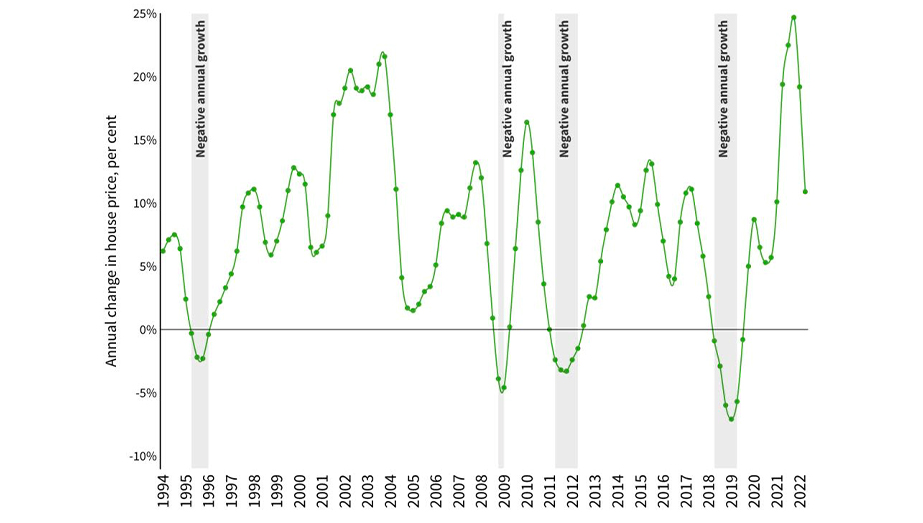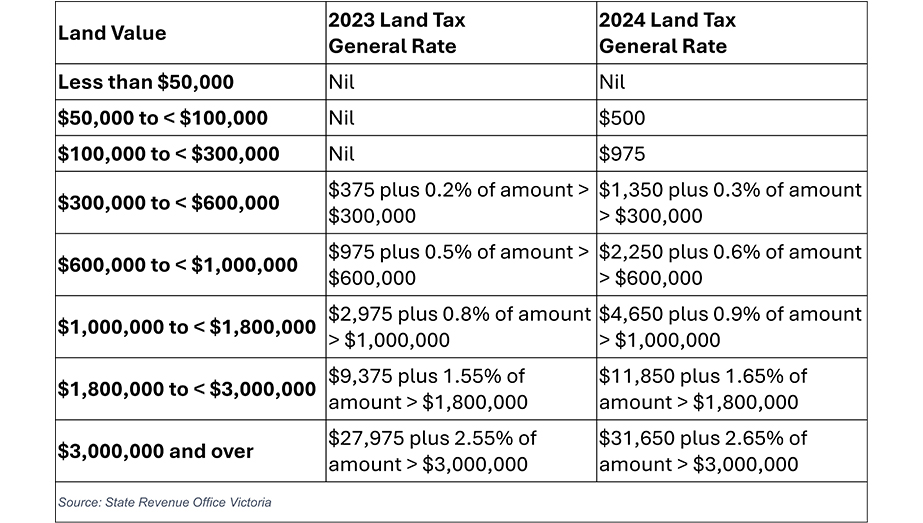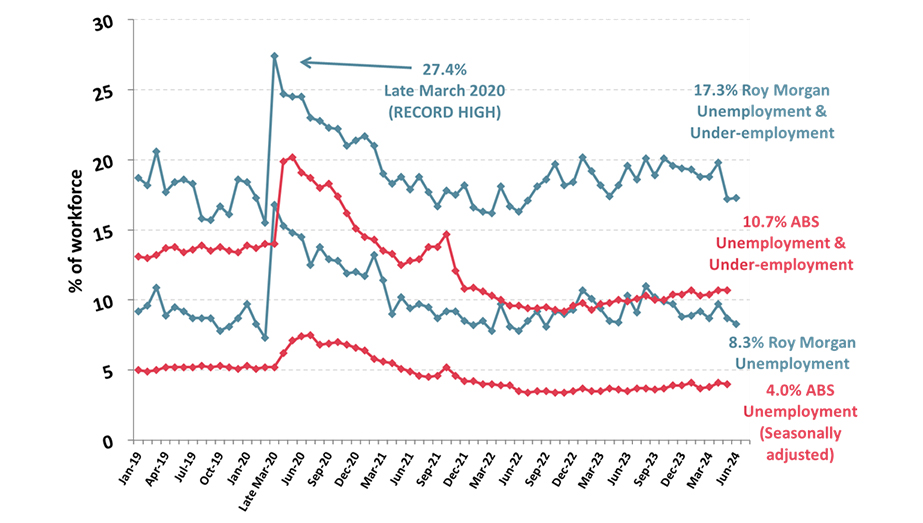Property Edge
Australia’s Top Performing Suburbs: High-Achieving Property Hotspots Revealed

Welcome to this week’s edition of the Property Edge Newsletter. In this issue, we bring you the latest insights on Australia’s top-performing suburbs, the critical role of luxury homes for the wealthy, and key economic indicators that may influence the Reserve Bank’s next interest rate decision. Stay informed and ahead of the market with our timely analysis and updates.
First we want to share some big news!
You know how it goes in this game. One minute you’re on top of the latest property listings, and the next, you’re swamped under a mountain of data, missing out on deals that could’ve been winners. It’s like you need superpowers just to keep up.
But guess what? Now, you can have them (sort of).
Imagine having a team of hyper-efficient, always-on assistants who make sure you never miss a beat. They’re not just any assistants—these are AI wizards, built to make your property deals smoother, smarter, and way faster. It’s like taking a magic property pill Bradley Cooper in Limitless, only better… because there’s more than one of you, and these machines never need a break.
Here’s who’s joining your team:
- Ben the Buyer’s Assistant: Need to find the perfect property? Ben’s already on it.
- Erin the Estimator: Got a quick question about costs? Erin’s your go-to for all the numbers.
- Paul the Paralegal: Stuck on contract jargon? Paul breaks it down and gets your offers sorted.
- Perry the Project Analyst: Need to impress a lender? Perry whips up the docs that can make them say yes.
- Terry the Town Planner: Confused about council codes? Terry maps out what you can do and where you can do it.
- Dianna the Designer: Wondering what your finished project could look like? Dianna’s designs bring your vision to life.
It’s your complete 6F property system—on steroids.

Ready to play the property game like never before? Click below and be the first to meet your new secret weapons. No capes needed, just your smart moves.
Enter your details here to be the first to hear about the new revolution in doing property deals.
Now to our weekly roundup….
Australia’s Top Performing Suburbs: High-Achieving Property Hotspots Revealed
New data highlights the top-performing suburbs in Australia’s property market for 2024. These areas show high demand, quick sales, and strong price growth, according to PropTrack data.
Interestingly, budget-friendly suburbs, not the most expensive ones, are leading in performance. This trend is driven by economic factors favouring areas within reach of buyers with modest budgets. Buyers encounter high interest rates and escalating prices, steering them towards more economical locations.
Key Highlights:
Western Australia: Perth suburbs dominated the house price growth charts, with Medina, Parmelia, and Orelia showing around 25% growth. Perth’s housing market has been a frontrunner, fueled by reasonably priced properties, a tight rental market, and strong population growth. These factors have also made Perth a target for investors.
Queensland: Brisbane’s Stafford and outer Townsville suburbs like Rasmussen, Cranbrook, and Vincent have shown significant growth, with some areas experiencing price increases of over 15%.
New South Wales: Western Sydney suburbs like Merrylands West, Guildford West, and Guildford have seen house prices rise by about 11% this year. These areas offer more cost-effective options compared to Sydney’s median house value, attracting both first-home buyers and investors.
Victoria: Regional towns have performed well, with Rutherglen leading the way with a 6.7% increase in house prices. Suburbs like Hampton Park, Hallam, and Echuca also showed notable growth.
South Australia: Adelaide’s northern suburbs have shown strong house price growth, with some areas experiencing a 17% increase. Suburbs like New Port, Norwood, and Glenside have also seen strong unit price growth.
Tasmania, ACT, and NT: Suburbs like Margate in Tasmania, Curtin in the ACT, and Moulden in the NT have demonstrated solid growth, with house prices rising by around 6.1%, 8.6%, and 7.5% respectively.
Top Performing Suburbs by State (2024)

Demand Indicators
High enquiry rates and rapid selling times reflect intense buyer competition in affordable suburbs. Tanah Merah in Brisbane’s Logan region had the most enquiries per house listing, with properties receiving 56 enquiries on average. Perth’s northern suburbs and Sydney’s outer suburbs also showed high demand, with properties selling quickly after multiple offers.
Speedy Sellers
Measuring the days on market reveals where properties are selling the fastest. Seville Grove in Perth’s outer south-west had the shortest selling time, with houses selling in seven days. Other fast-selling areas include suburbs in the Macarthur and Penrith regions in Sydney, and outer eastern suburbs in Melbourne.
This property market performance analysis underscores the shift towards affordability and highlights the suburbs offering strong investment potential in 2024.
Could Australia’s Property Market Decline?
Australia’s property market has consistently defied expectations, experiencing growth even amid cost-of-living crises and high interest rates. Recently, Melbourne’s market has seen a decline while other capital cities have reached new price peaks.
However, could Australia’s entire property market actually decline?
Defining “Backwards”
PRD real estate chief economist Dr Diaswati Mardiasmo emphasises the importance of defining what “backwards” means. A slight decrease in prices, such as 20,000 or 10%, is more realistic than a crash to pre-pandemic levels.
Market Crash vs. Market Decline
AMP Capital chief economist Shane Oliver explains that a market crash is defined by a drop of more than 20% in property prices. Australia has not experienced such a drastic fall, with the worst being a 15% decline in Sydney from 2015-17. A crash would imply severe economic consequences, including high unemployment.
Domain data has historically shown an average price decline from peak to trough of 3%
Historical Market Declines

Economic Factors
Domain chief of research Dr Nicola Powell states that a crash would require significant economic downturns, such as high unemployment and a slowdown in population growth. Despite high interest rates and inflation, Australia’s housing market shows resilience due to undersupply.
Melbourne’s Unique Case
Melbourne’s property prices have fallen slightly, described as “going sideways” for the past 18 months. This stability is seen as beneficial for affordability and new buyers entering the market.
Why Other Markets Are Stable
Other capital cities have not seen similar declines due to better supply, population shifts, and differing tax policies. For example, investors find Melbourne less attractive due to higher land taxes and lower short-term capital growth prospects.
Potential for Broader Decline
Dr Mardiasmo suggests that a major economic shock, similar to the extended pandemic lockdowns, would be needed for other cities to experience significant declines. Cities like Brisbane and the Gold Coast would need a severe recession to see large price drops.
Land tax changes

Conclusion
Economists agree that a return to pre-pandemic prices or a major crash in Australia’s property market is unlikely without a catastrophic economic event. The market’s resilience is supported by strong demand and limited supply.
“The old saying in Australia used to be ‘the property market never goes down’,” says Oliver. “There’s a bigger constituency that wants higher property prices than lower prices.”
Luxury Homes Now a “Must Have” for Wealthy Australia’s
Prestige property has become a crucial asset for Australia’s wealthiest individuals, who now view high-end residential real estate as an essential part of their financial portfolios, according to a new report.
Westpac Private Bank’s inaugural Prestige Property Report highlights a significant increase in the number of properties trading above the 5 million mark, more than doubling since 2019.
In Sydney’s eastern suburbs, the Woollahra LGA recorded the highest proportion of 5 million-plus sales. Over the past two decades, sales of properties above 5 million surged by 1151 per cent, reflecting a long-term upward trend.
Tim Lawless, Executive Research Director of CoreLogic Asia-Pacific, noted the enduring demand for prestige property despite recent global uncertainties. “The report shows the ongoing strength of the prestige property market in Australia, especially relative to pre-pandemic levels,” he said. “Over the 20 years to 2023, the number of homes selling for 5 million or more has increased 12-fold.”
From 2019 to 2021, homes selling for more than 5 million saw a 240 per cent increase during a peak growth phase. Although the number of these sales steadied last year, dropping to 2927 from the 2021 peak of 3845, the figure was still up 159 per cent from 2019 to 2023.
While prices have risen broadly in the housing market, the prestige sector has outperformed. CoreLogic’s national Home Value Index recorded a 24.5 per cent increase in 2021, with the upper quartile of house values rising by 30 per cent.
In a Class of Its Own
Westpac Private Bank Managing Director Ashley Stewart explained that the top tier of Australian property now operates within its own protected sphere, less influenced by broader economic trends. “Prestige property has proven less vulnerable to economic shocks,” he said. Wealthy individuals, often cash buyers, are less affected by interest rate fluctuations.
Pandemic-era supply chain disruptions, increased construction costs, and overseas migration have heightened demand for well-located designer homes, already a scarce resource. “Supply and demand is out of balance in terms of the construction industry’s ability to absorb the demand we are seeing in terms of prestige property,” Stewart added.
Lifestyle factors such as proximity to water and nature, health and wellbeing features, working from home, and intergenerational living have also increased the importance of luxury property for wealthy Australians. This scarcity is expected to sustain long-term demand, particularly for freestanding houses within a 10-kilometre radius of a capital city, especially those near water and with water views.
In Sydney, waterfront properties remained the top choice, with 23 of the top 30 suburbs with the most 5 million-plus sales located by the water.
Mosman Takes Top Spot
Sydney accounted for nearly two-thirds (66.5 per cent) of Australia’s 5 million-plus property sales in 2023. Mosman, on Sydney’s lower north shore, recorded the highest number of these sales, with 140 properties sold above 5 million. Bellevue Hill, known for large compounds and water views, had the most transactions over 20 million, with 12 sales in this high price range.
In Victoria, Melbourne’s Toorak led with 48 sales over 5 million. Noosaville was the only Queensland suburb in the top 30, recording 22 sales over 5 million in 2023.

This report underscores the increasing importance of luxury properties as critical assets for Australia’s wealthiest individuals, driven by unique market dynamics and lifestyle preferences.
Inflation Figures Critical for Upcoming Reserve Bank Interest Rate Decision
Inflation figures due in less than two weeks will be pivotal for the Reserve Bank’s interest rate decision in August, as Australia’s jobs market remains robust despite economic challenges.
In June, the unemployment rate slightly increased to 4.1 per cent, according to the Australian Bureau of Statistics, while the trend unemployment rate has remained steady at 4 per cent for four months. Treasurer Jim Chalmers highlighted the positive employment figures amidst tough economic conditions, while opposition employment spokesperson Michaelia Cash noted the high number of Australians working multiple jobs to make ends meet.
Roy Morgan Unemployment

Both the participation rate (66.9 per cent) and the employment-to-population ratio (64.2 per cent) remain near record highs.
CreditorWatch chief economist Anneke Thompson remarked that the strong employment figures were positive for the Reserve Bank, which aims to maintain employment levels while reducing inflation. However, the challenge remains whether inflation can be controlled under the current monetary policy.
The consumer price index showed a decrease in inflation to 3.6 per cent in March from a peak of 7.8 per cent in December 2022. Nevertheless, monthly inflation figures have been rising, reaching 4 per cent in May.
Economists suggest that the Reserve Bank might consider raising interest rates if the upcoming June-quarter inflation data shows a significant increase. AMP deputy chief economist Diana Mousina noted that while job vacancies indicate a slowly easing labour market, a high inflation reading could prompt a 0.25 percentage point rate hike.
EY senior economist Paula Gadsby stated that the June inflation data, to be released on July 31, is crucial for the Reserve Bank’s next meeting. If it shows an acceleration in price pressures, a rate hike could be on the table, though the current expectation is for the cash rate to remain unchanged for some time.
Thank you for reading this month’s Property Edge Newsletter. Stay tuned for more updates and expert opinions in our next issue. For any questions or further information, feel free to reach out to us. Until next time, happy investing!
P.S. Big News! We are about to launch new groundbreaking technology that will revolutionise property deal making for property entrepreneurs and investors in Australia. This will not only feature killer tools and data, but it will also include AI powered research technology to automate end to end deal process, along with “just in time” training and support. This will be complimented with the knowledge, support and systems and like-minded community all available in a custom designed mobile app. Get to be the first to see this new property deal making revolution first by joining the pre-launch hotlist below.
Enter your details here to be the first to hear about the new revolution in doing property deals.